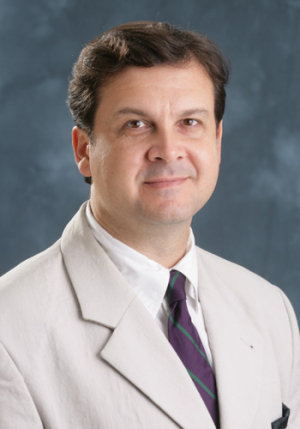Thanks to a recent grant from NASA, a University of Houston Cullen College of Engineering professor’s theories on crystal formation will be tested onboard the International Space Station.
Professor of chemical and biomolecular engineering Peter Vekilov won the grant, valued at just less than $100,000, to study how proteins in a liquid solution nucleate, or form crystals.
While researchers understand how these crystals grow, how they start – that first transformation from liquid to crystal – is much less understood.
In 2004, Vekilov made an important discovery involving this process: before forming a crystal, proteins in a solution come together in dense droplets, where they possibly begin to unfold into the shape they have when crystalized. He proved this theory through direct observation three years later.
There is still much about this phenomenon that is not understood, however. Crystallization processes that work well in a small volume of solution (one milliliter) often do not work at all when scaled up to industrial-size levels of 100 or 1,000 liters - amounts used to produce medicines and other important chemicals and products.
Vekilov believes that this is largely due to sheer flow: essentially, the flow of liquid in a system at uneven speeds. Sheer flow can be seen in any river or stream, where water near the banks moves more slowly than water in the middle. When it occurs around the dense, protein-filled droplets that form before nucleation, sheer flow changes how nucleation occurs, possibly by impacting how the proteins in these droplets are folded.
There is no practical way to test this theory on earth, however. Even in small containers, gravity induces sheer flow. And while certain chemicals can be added to a solution to effectively eliminate the sheer flow, these chemicals are impure and change the chemistry of the nucleation process.
The only answer, then, is to study a pure solution in a microgravity environment. “We have relevant scientific questions that can only be answered by doing experiments in space. We hope to see a difference between the nucleation rate on earth and in space,” said Vekilov.
These experiments will be performed by astronauts affiliated with the European Space Agency, most likely in 2016. In the mean time, Vekilov and his collaborators at research institutions in Europe will build instrumentation and conduct further explorations of nucleation and sheer flow on earth, allowing them to gather data and develop better models of the process.
By combining this information from data collected through experiments on the International Space Station, Vekilov hopes to develop a deep understanding of sheer flow’s impact on protein crystal nucleation. From there, he said, researchers should be able to design small-scale experiments that mirror the sheer flow in industrial-scale crystal production. As a result, it will be easier to scale up lab work to large volumes.
These findings, though, could impact much more than commercial crystallization efforts, said Vekilov. Nucleation in general and sheer flow’s impact on nucleation in particular are among the least understood phenomena in the fields of chemistry and chemical engineering. This research could help provide a much better fundamental understanding of these processes.
“This goes beyond proteins,” he said. “There is a big mystery about how sheer flow affects nucleation. All the theoretical models that predict sheer flow’s impact on nucleation are off by a factor of 100. That is a major discrepancy. If we prove that sheer flow affects the nucleation of proteins, it is possible it affects the nucleation of all types of systems – small molecules, colloids, organic materials, inorganics – maybe by some different mechanism. So this is really about the fundamental science, the fundamental understanding of nucleation.”
